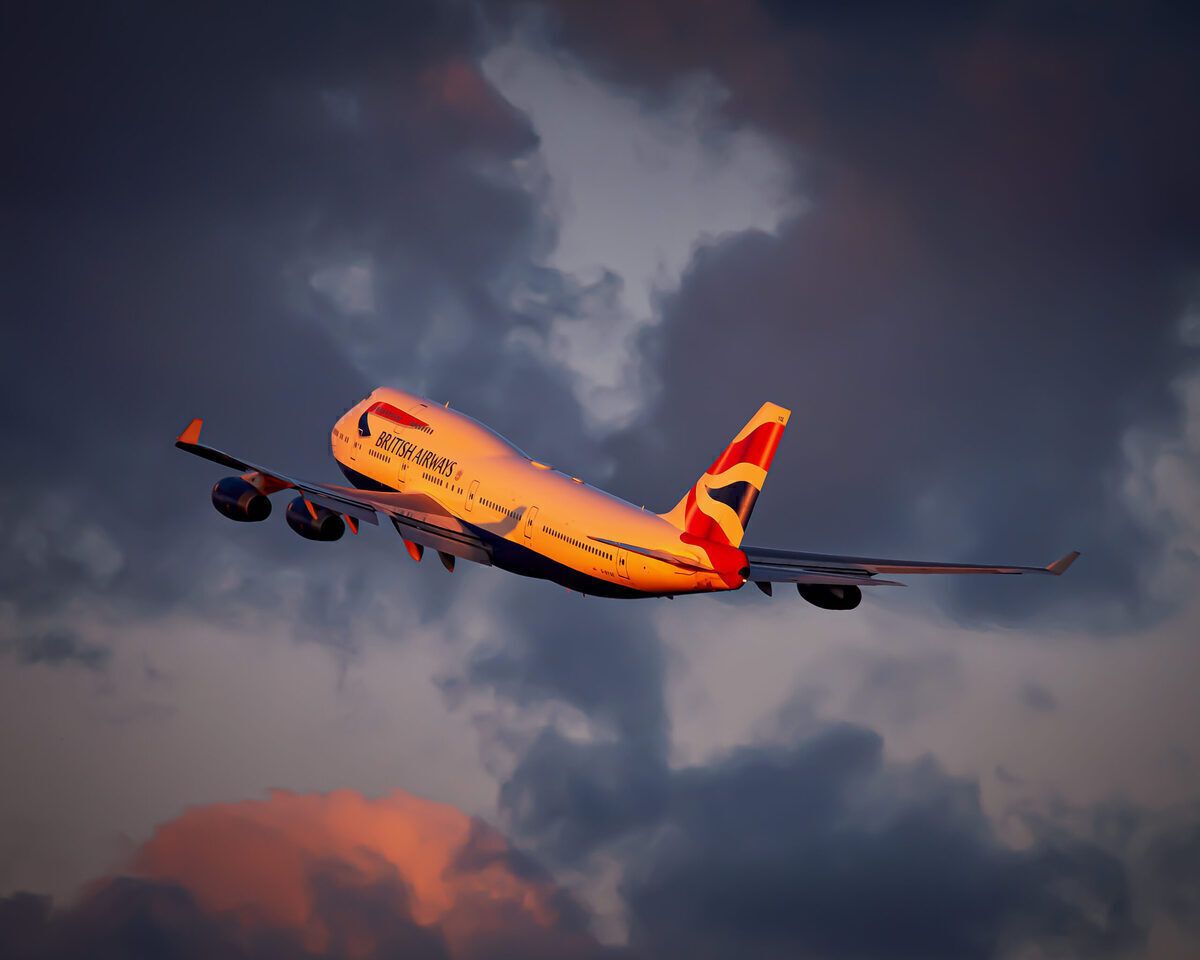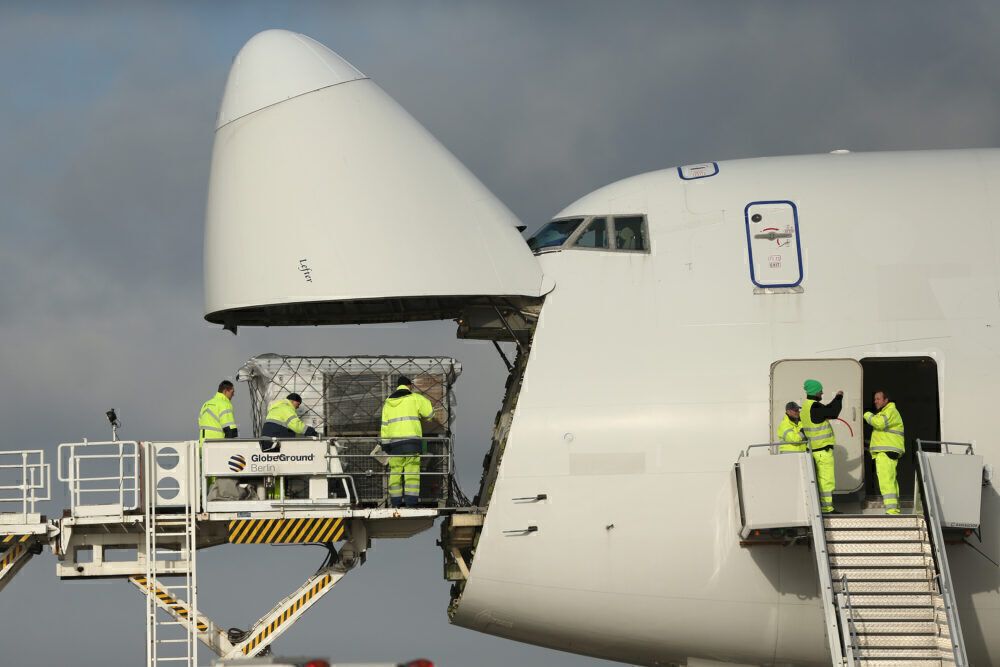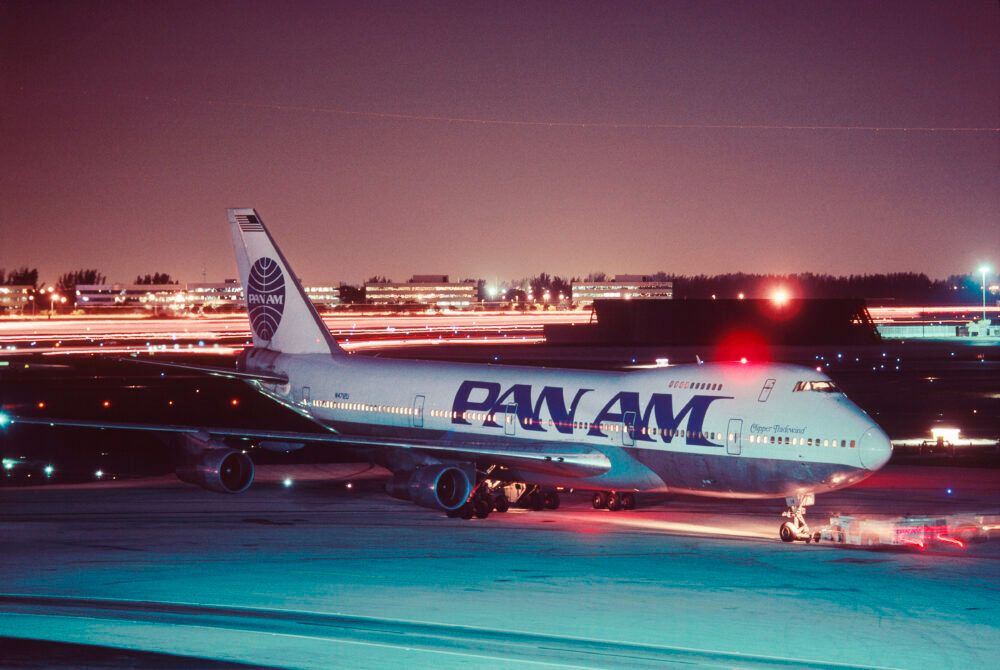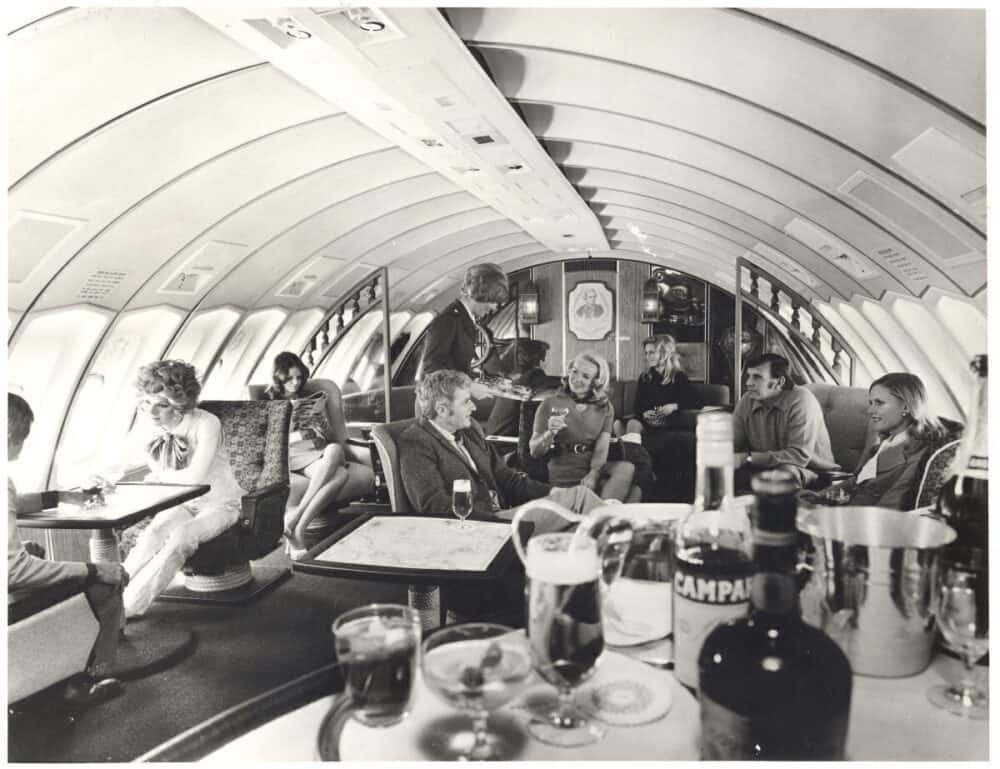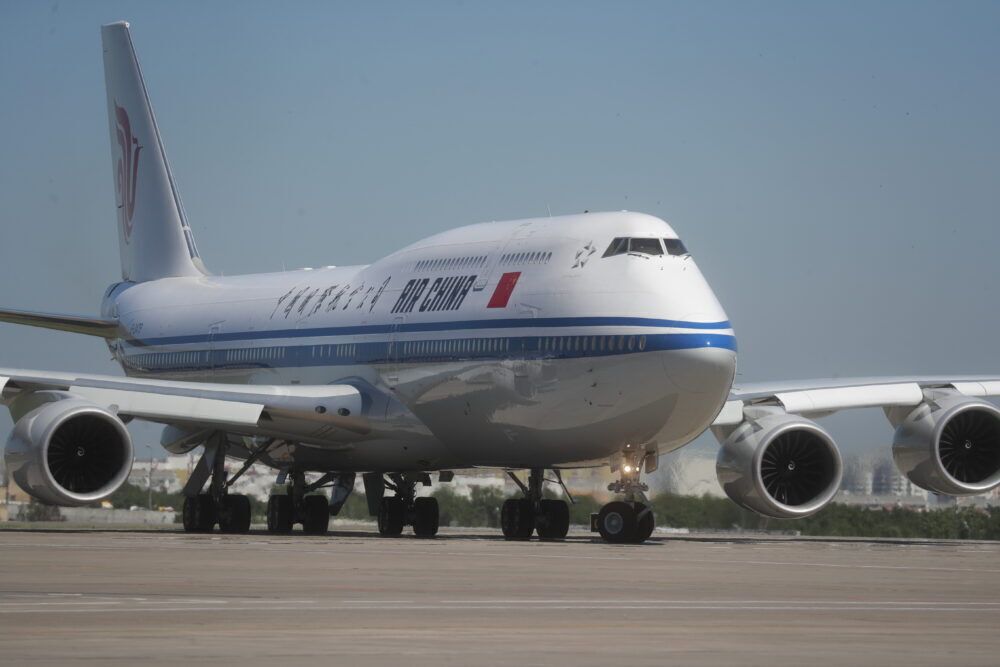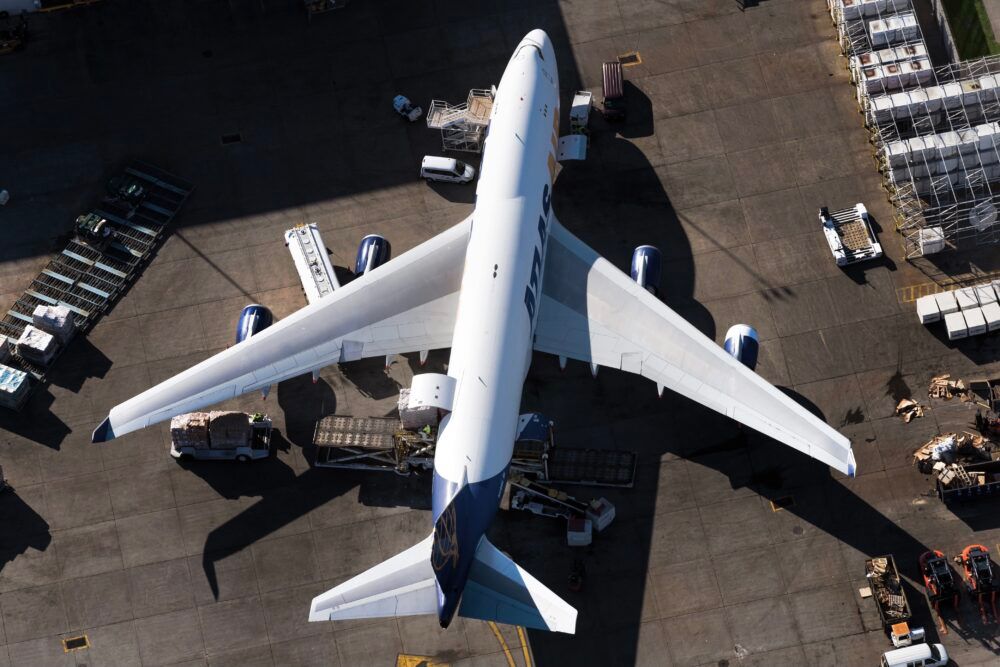It’s just over 50 years since the Boeing 747 entered service. It has been a travel icon, as well as a major contributor to the development of the industry, but is now sadly nearing the end of its life in passenger service. This article takes a look at the highlights of the Boeing 747 and its ongoing decline.
Designing the 747
The origins of the 747 go back to the 1960s. Pan American Airways saw the economic potential and asked Boeing to design an aircraft around twice the size of the Boeing 707 and the DC8. Boeing’s starting point was the recent work they had been doing to design a freighter aircraft for the US military (they lost this to the C5 Galaxy).
The now-famous two-deck design came about both to offer increased passenger capacity and to allow the nose to lift for freight access. This freighter option has been one of the successes of the 747 family.
Originally, a full second deck was envisioned, but this was not possible due to safety requirements at the time. This resulted in the small upper deck. The increased weight was taken care of using new Pratt & Whitney bypass turbofan engines, with around twice the power of other engines at the time.
Stay informed: Sign up for our daily and weekly aviation news digests.
Flying since 1970
The Boeing 747 first entered service with Pan American Airways in 1970. Initial orders for the aircraft were slow. It was launched amidst an oil crisis, and there were issues with the engines and performance. This improved throughout the 1970s and orders increased, partly as Boeing took feedback from customers to improve the aircraft.
Various versions of the 747 have been introduced. These include:
- The 747-200 was introduced in 1971, with more powerful engines allowing a greater range
- The 747-300 was the first to stretch the upper deck.
- Winglets were added for the 747-400, and the stretched deck was maintained.
- And in 2005, Boeing introduced the 747-800. This offers many design changes (several taken from the Boeing 787) and, crucially for the future of the 747, it is available as a freighter version.
Changing the world of aviation
The 747 has shaped the aviation world in many ways. Perhaps most importantly, at the time of its introduction, it really changed the economics of flying. The increased capacity gave airlines much more scope for different pricing and ticket types. Especially so when combined with the deregulation of airfares in the US. This was, in many ways, the start of affordable long-haul travel.
Better service and cabins
Its size also brought about changes in cabins and service. Earlier jet aircraft, such as the Boeing 707 and 727, had offered economy and first class cabins, but much more was possible with the 747.
By the late 1970s, airlines went further with an extra class of service. Qantas was the first airline to offer a new business class cabin on their 747. Other airlines (including British Airways) soon followed.
But it was not just seating that improved with the 747. Many airlines used the extra space offered to provide lounges or bars, typically for first class passengers. This provision of extra facilities had been seen earlier (with some aircraft in the 1940s and 1950s, for example, offering tables, beds or varied first class seating) but had largely been lost in early jet aircraft.
Decline and current position of the 747
Boeing has built over 1,500 747 aircraft to date. These have seen service with many airlines around the world, but have been in slow retirement for many years. As of June 2021, just 21 passenger 747-8s remain in service, alongside 22 passenger 747s of other variants.
With a fleet of 19 of the newest 747-8s in service, Lufthansa remains the biggest operator of this type. Korean Air has 10, although only one is currently active, while Air China flies seven, six of which are active, according to ch-aviation.com.
Of the older 747s, Air China has just three 747-400s in passenger configuration still flying. Cargo and charter airline Atlas Air has seven passenger 747-400s, but only three are currently active. Rossiya has the largest fleet with nine, although only four are being used at present, while Asiana and Iraqi Airways each have just one solitary -400 in use.
The rest of the remaining older generation passenger 747s are largely special use vehicles. Some fly in military roles for users including the Dubai Air Wing and Oman Royal Flight, while the Korea Air Force uses one in VIP configuration. Of course, the USA also has two specially configured 747s known as the VC-25As which frequently fulfill the role of Air Force One.
Of course, many more older 747s are still making their keep as freighter aircraft. Some of the larger fleets include 32 flying with Atlas Air, 18 with China Airlines, 24 with Kalitta Air and 13 with UPS.
The newer 747-8 is also popular for cargo, with AirBridgeCargo flying 13, Cargolux 14 and UPS 22, among others. Atlas Air has 10, with four to be delivered, which will be the final 747s ever to roll off the production line at Boeing.

